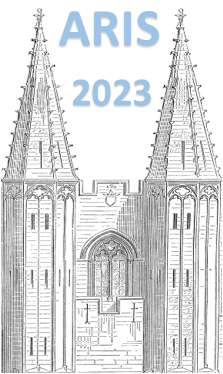Orateur
Description
Short half-lives, low production rates and the need to produce them by fusion-evaporation reactions all complicate laser spectroscopy studies of (trans)actinides. The In-Gas Laser Ionization and Spectroscopy (IGLIS) technique has been succesfully employed in studies on short-lived actinides (see for instance [1,2]). The addition of a convergent-divergent (de Laval) nozzle to create a cold hypersonic gas jet combines efficiency with sub-GHz spectral resolution. The new generation of nozzles with a Mach number of $8$ enables laser spectroscopy studies of actinides with spectral resolutions around $200 \,$ MHz [3].
The light actinide $^{229}$Th and its nuclear clock isomer have attracted significant attention in the last years. A remarkable feature is the suggested short half-life ($ < 10 \,$ ms) of the isomer in its, not-yet observed, singly charged state [4]. We report on the design of a fast-extraction gas cell (evacuation time of $ \sim 1 \, $ ms) and tailor-made recoil ion sources of $^{233}$U prepared by TU Vienna and JGU Mainz which are installed inside the gas cell to provide the isomeric thorium ions. A new set of de Laval nozzles was designed and characterized to operate under the required low-stagnation-pressure conditions of the recoil sources as well as for spectroscopy studies of (trans)actinides in the JetRIS experiment at GSI [5]. A level search above the second ionization potential of thorium revealed several auto-ionizing states which are used to improve laser ionization efficiency for future in-gas-jet laser spectroscopy studies of $^{229m}$Th$^+$.
[1] C. Granados et al. Phys. Rev. C, 96:054331, 2017.
[2] S. Raeder et al. Phys. Rev. Lett., 120:232503, 2018.
[3] R. Ferrer et al. Physical Review Research, 3:043041, 2021.
[4] L. von der Wense et al. Nature, 533:47–51, 2016.
[5] S. Raeder et al. Nucl. Instrum. Methods Phys. Res. B, 463:272–276, 2020.

